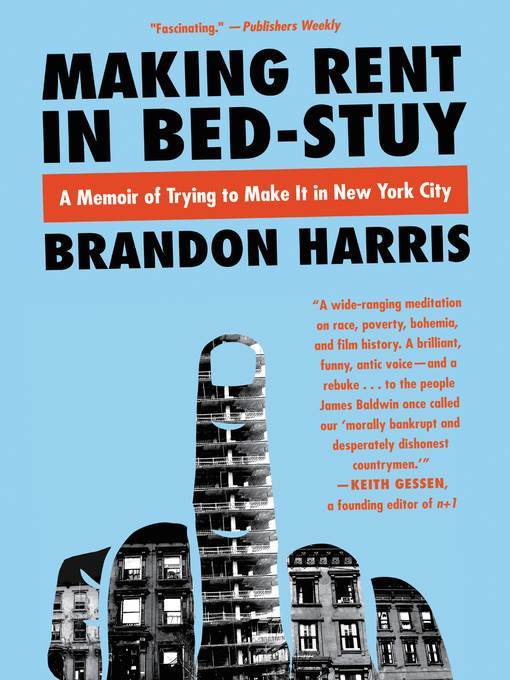
Making Rent in Bed-Stuy
A Memoir of Trying to Get By in New York City
کتاب های مرتبط
- اطلاعات
- نقد و بررسی
- دیدگاه کاربران
نقد و بررسی

March 27, 2017
In this fascinating mishmash of a memoir, filmmaker and critic Harris grapples with the contradictions of gentrified Brooklyn, tossing film reviews, history, journalism, and a healthy dose of bile into his lumpy mix. Harris, an upper-middle-class art-school student from Cincinnati, moved to New York City to pursue auteur ambitions and landed in predominantly African-American Bedford-Stuyvesant. Harris, who’s black, was struck by the gulf between gentrifiers and gentrified as well as his increasing unease over his own precarious foothold among the privileged. Harris’s bold attempt to connect Brooklyn gentrification to the national plight of the African-American underclass falls short, in large part because his primary contact with Bed-Stuy natives is buying nickel bags of marijuana. He never convincingly portrays other people in his life. But many other sections of this disjointed hybrid sparkle, and his lengthy vivisections of Spike Lee and Lena Dunham are particular highlights. The non–Bed-Stuy material features his best writing, but his inclusion of so much of it—most puzzlingly a Mississippi detour—further dissipates the central narrative. Despite the unevenness, this memoir provides hard-won insights into the divided loyalties of middle-class African-Americans, and a convincing description of a 21st-century New York City where only the rich can thrive.

April 1, 2017
Race and identity loom large in Harris' highly personal and equally cerebral retrospective of his early days treading the streets of Brooklyn.Even today, "Clinton Hill," to many, sounds like a lot better place to live than "Bed-Stuy." So much so that when the author was pitched a place to live in New York City in the early 2000s, the latter was actually disguised and passed off as the former. Regardless, the brutal reality of adulthood and Bed-Stuy would soon be impressed on the conflicted Midwestern transplant hoping to make it as a filmmaker and critic in the city. In Bed-Stuy and its surrounding environs, Harris navigated the thorny landscape of racial relations and worked hard to make ends meet. In addition to his personal story, he also explores the struggles and similar experiences of local luminaries, including Jay-Z, who went from unknown drug dealer to international superstar and business mogul. In the example of Jay-Z, Harris sees his own struggles as a young black man trying to square with the American dream and dealing with the nation's systemic racism. President Barack Obama, who was trying to make it in Brooklyn during the mid-1980s, is also a source of serious contemplation about the ability and/or necessity of black Americans to code shift within certain sectors of society. The author's ambivalence is painfully demonstrated in strained relationships with his roommate and, later, his girlfriend, both white. As he writes about his roommate, "I would go weeks without talking to him, preferring solitude when I could find it in a loft in which you heard everything the other was doing regardless of the drywall." Traversing America's "double consciousness" is tough going, especially when you're just out of college and trying to earn enough for recreational marijuana and exorbitant Brooklyn rents. A thought-provoking examination of the millennial black experience in the first decade of the 21st century.
COPYRIGHT(2017) Kirkus Reviews, ALL RIGHTS RESERVED.

























دیدگاه کاربران